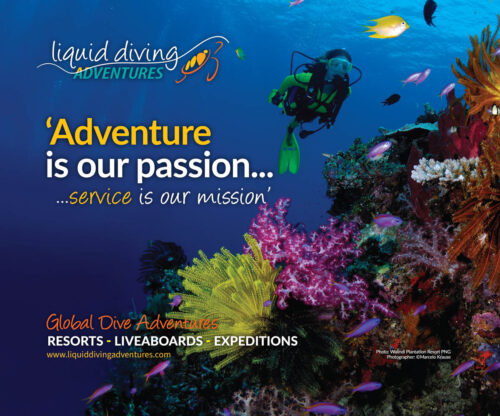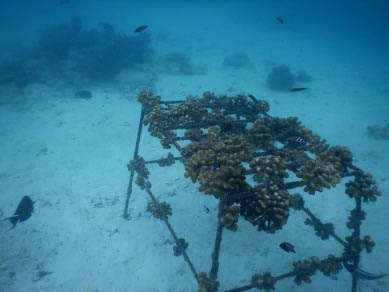When I saw with my own eyes the coral reef for the first time, I was 10. Until that moment I knew this ecosystem just as unreachable photograms and videos on the tv.
My family and I went for holiday to Sharm El Sheik. I didn’t know that that holiday would have changed my life goals! I remember when the first day I put my mask on, and just by entering from the shore I could admire the amazing underwater world. I was surprised by the colors of the fish, of the corals and from the amazing interactions that there was in that apparent silent world. So I’ve decide to become a marine biologist.
After my master’s degree, I got my first job in the Maldives. It was 2017. On the flight I couldn’t stop crying for the excitement. But the first time I put my mask on and I went underwater, it was not as when I was 10. I had the feeling I was late.
The 2015 – 2016 El Niño phenomena and the associated sea surface temperature anomalies in 2016 caused one of the largest recorded episodes of mass coral bleaching in the Maldives (Ibrahim et al., 2017). The 2016 El Niño is considered one of the strongest El Niño events recorded since 1950, reaching temperature higher that 32°C recorded.
El Niño is a climate pattern that describes the unusual warming of surface waters in the eastern tropical Pacific Ocean. El Niño, that means “small child” in Spanish, is the “warm phase” of a larger phenomenon called the El Niño-Southern Oscillation (ENSO).
SO HOW THIS EXTREME CLIMATIC EVENT CAN CAUSE CORAL BLEACHING?
Hermatypic corals are those in the order Scleractinia which build reefs by depositing hard calcareous material for their skeletons, forming the stony framework of the reef. These hard corals are the main reef builders. Corals that do not contribute to the reef development are defined ahermatypic (non-reef-building) species.
Hard corals have a symbiotic relationship with some microalgae, called zooxanthellae, that live in their tissue. Coral and algae depend on each other to survive. The zooxanthellae contribute to the coral nutritional needs by photosynthesizing and proving carbon to the host coral, while the microalgae can have a safe place in the endodermal cells of the coral. This relationship, thanks to the pigments in the microalgae, make the coral colorful.
When the coral feels stressed because of adverse environmental conditions (such as changes in temperature, nutrients, pollutants, etc), it expels the algae from the coral’s tissue, and the coral is going to be bleached, it becomes white. Corals suffered the change of temperature even if it’s just about few degrees. Imagine the human being…We feel sick and we have fever when the temperature of our body is just 1 o 2°C more of the usual temperature. Same is happening for the corals and the temperature they have around. Without the zooxanthellae the coral loses its major source of food and it is more susceptible to disease and other species of algae can grow on it covering the holes where the polyps are.
Coral bleaching is not an irreversible situation. In fact, in some instances corals can recover. If the environmental conditions turned back to normal, the coral can still host the microalgae, get colored again, grow and survive. A healthy reef can recover from coral bleaching but it needs time and the right conditions.
In the Maldives I started a coral restoration project as well. Planting fragments of hard corals that have already been detached from the main colony for different reasons (fins, storms, fish…), gives them a hard substrate to grow, helping them to survive and hopefully build a new reef. It was satisfying seeing how the corals (even though very slowly) could keep on growing.
Luckily after the first year in the Maldives, I could see the reef getting better and better every day, and while I still though I was late, I also started thinking that each of us can do something to make the reef feel better. Everything is within our power today; we have the knowledge to avoid mistake and to make the right decision in anything we do. Even if we live far from the reef. We need to urgently reduce our carbon pollution and limit the global temperature increase, go forward a sustainable life in everyday gestures.
Ibrahim, N., Mohamed, M., Basheer, A., Haleem, I., Nistharan, F., Schmidt, A., … & Grimsditch, G. (2017). Status of coral bleaching in the Maldives 2016. Marine Research Centre.








